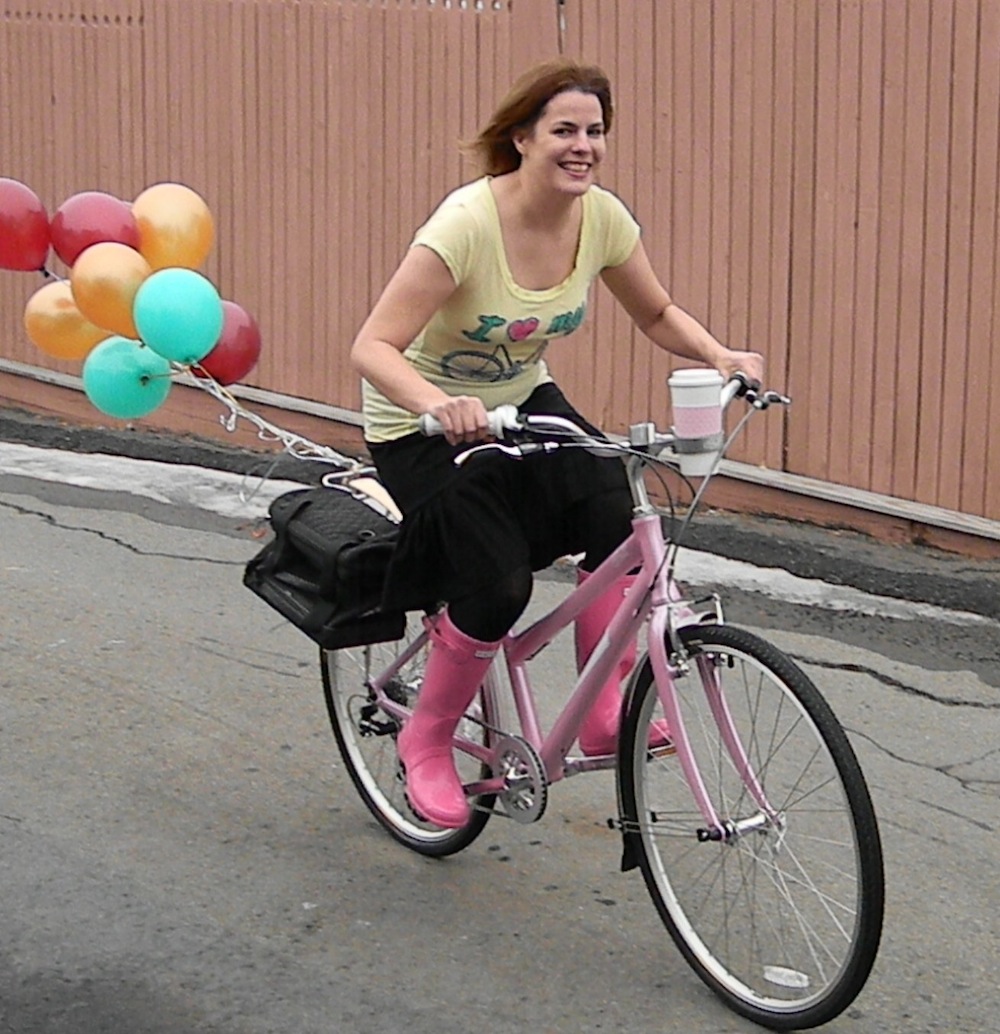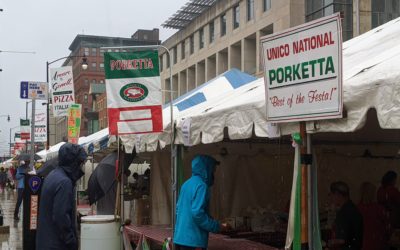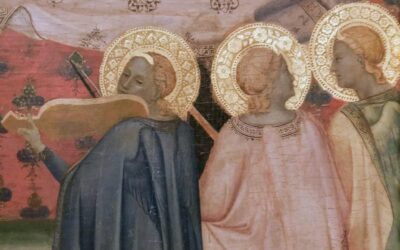 One of the beautiful bridges crossing the Tiber River in Rome.
One of the beautiful bridges crossing the Tiber River in Rome.
Rome drips. The city cannot neatly contain everything it holds. It spills forth with its dizzying spirals of neighborhoods, sculptures, cars, mopeds, strolling people, relics, cafe tables angled on cobble streets, vines and greenery cascading from buildings. You lose yourself in the city’s sensual chaos. I had only a cursory knowledge of Rome and assumed I would have a great time in one of the world’s great urban centers. But I did not know how much I would fall in love with this layered city born from seven hills where shepherds raised their sheep, transformed into an empire, rising to the center of Christianity and reinvented as the heart of unified, modern Italy.
I was traveling with my adventurous, philosophical Mother. She appreciates the complexity people have faced on this spinning planet over thousands of years; the light but also the dark of civilization. The dance of people’s egos, intellect and humanity clashing. She isn’t someone who just looks at things superficially. She deeply connects with it. Pays homage to the beauty and sorrow that lingers in places. She is also a great appreciator of a good repast and cocktail to reinvigorate the traveling soul, that can quickly be overwhelmed by such magnitude of experience.
But a true journey is singular and unique. It can never be repeated. It starts with perfect plans that become commingled with mistakes, wrong turns and unexpected roads and serendipitous moments. While stories can be shared and advice given, the experiences that open one’s own heart are singular. A secret library in the catacombs of memory. Something that will at times when back in the everyday world makes one smile mysteriously. And so as it was with this trip. I did not see the famous Trevi fountain, as it was being repaired, but I did see the enchanting bronze key hole at the priory Piazza dei Cavalieri di Malta i designed in 1765 by the famous Italian architect Giovanni Battista Piranesi in the tranquil Aventine section. The key hole frames the dome of St. Peter’s like a miniature postcard surrounded by the a lush garden. I kept getting lost on my way to the famed Campo Fiori market but saw the charming Napoleon Museum when I stumbled in to use the restroom and stayed to look around. Such is life and travel.We start with a vision, but sometimes what we end up seeing is more expansive than what our minds alone had planned.
We were staying at the charming Hotel Mozart in the heart of the Piazza di Spagna or Spanish Steps section, named so because it is next to a conservatory. If you seek American style customer service and luxury, this hotel may not be for you. Our toilet broke several times, the room was tiny and the concierge a bit reserved. But the hotel’s charm lay in a gorgeous roof top cafe where I sipped Cynar, an artichoke liquor, and in the evening gazed at rosewater honey sunsets dripping over the domes and rooftops of the city. There was also an amazing “colazione”, (breakfast in Italian) served by a friendly wait staff, with everything from homemade tarts, cakes, fresh fruit, cheeses and bread. And the hotel location is superb. As you step out of the Hotel Mozart you are immediately in the bustling heart of the Piazza di Spagna right off of Via del Corso only a few blocks form the famous Spanish Steps and not far from the Piazza del Popolo, now a peaceful square with a 3,000 year old Egyptian obelisk in the center, but formerly a place where public executions were held.
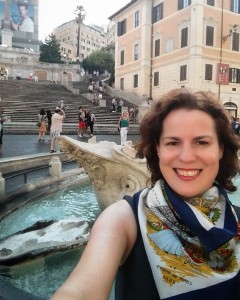
Selfie in front of the Fontana della Barcaccia Piazza di Spagna (Spanish Steps)
Rome has always been a city where seekers and expatriates flock seeking everything from spiritual, artistic or financial inspiration. The Piazza di Spagna especially has long been a central gathering place for such types, and is called so because in the 17th century Spain’s ambassador to the Holy See (the governing body of the church) had his headquarters on the square, thus making it technically Spanish territory. It is connected to the French church built in 1495 on top of the hill, Trinità dei Monti by the famous and inspiring steps. As with much history it was messy and complicated, as the owners of the church wanted to link the church to the piazza with a flight of steps but also erect a statue of King Louis XIV at the top. Pope Alexander VII was not in favor of the monument and so arguments continued until the 1720’s when finally an Italian architect, Francesco de Sanctis, created his beautiful design, which pleased both. It is said that artist models would gather here hoping to be painted by one of the many gathering artists. Today throngs of people are found taking selfies on the steps and at fountain designed by the famous Roman sculptor Gian Lorenzo’s father Pietro Bernini. He called it “Fontana della Barcaccia” translated as “leaky boat” in English. One story is that the water pressure is very low there and so he designed it to reflect the lack of water.
Right on on the Piazza overlooking the Fontana della Barraccia you can visit the Keats Shelly Museum in the house where the English Poet John Keats was sent by his Doctor because of his tuberculosis to convalesce. Sadly, he died there shortly after in 1821 at 25 years of age. The museum is now dedicated to the Romantic Poets such as Keats, Shelly and Byron who all spent time in Rome and the collection contains a great many treasures and curiosities as well as one of the finest libraries of Romantic literature in the world; now numbering more than 8,000 volumes. Keats and Shelly are buried in Rome in the non-Catholic cemetery known as the Protestant Cemetery, although there are Orthodox Christians and Muslims buried there. Located in the Testaccio neighborhood, which I attempted to visit it as it is supposed to be a beautiful quiet meditative space, but that I day I had meandered so much and was famished I stopped to eat and what was supposed to be a quick lunch turned into a leisurely couple of hours as a refreshed myself and enjoyed the streets scenes and chatted with the waiter. I ran out of time to go back before having to meet my Mom. Another example of plans not always following a especially in Rome with its many delightful distractions.
The Ara Pacis or Altar of Peace is also located near the Piazza del Popolo and is one of the most significant monuments of Rome. My friend and font of knowledge Nezka had put this on her suggest list of things to see. The Senate commissioned it in 13 BCE to commemorate the return of Augustus from his campaigns in Spain and Gaul. It was rediscovered in the 16th century and then later in 1938 and slowly more and more pieces were collected and missing parts recreated. The structure now is housed in a gorgeous glass building designed architect Richard Meier that opened in 2006.

Smoked salmon appetizer at the Hotel Russie.
Like all of Rome the Spanish Steps is saturated in history, but if it is some contemporary fun you desire, you can spend time strolling the streets offering much in the way of luxury shopping, especially Via Condotti and Via Bourbon which are two of the more glamorous streets. On Via Condotti you can take a break in the Caffe El Greco opened in 1760 where I had my first Peach Bellini of the trip, which are quite are quite popular in Rome. The drink is a simple but heavenly mix fresh peach puree and Prosecco. The Cafe also has nice desserts and sandwiches as well as nonalcoholic beverages. If sipping aperitifs and enjoying a bite to eat in beautiful hotels is your cup of tea you will not be disappointed. Not too far from Piazzo del Popolo on Via del Babuino is the the Hotel Russie which features a tranquil, verdant outdoor courtyard where My mother and I enjoyed some lovely hours here resting and discussing our travels with some appetizers and cocktails.
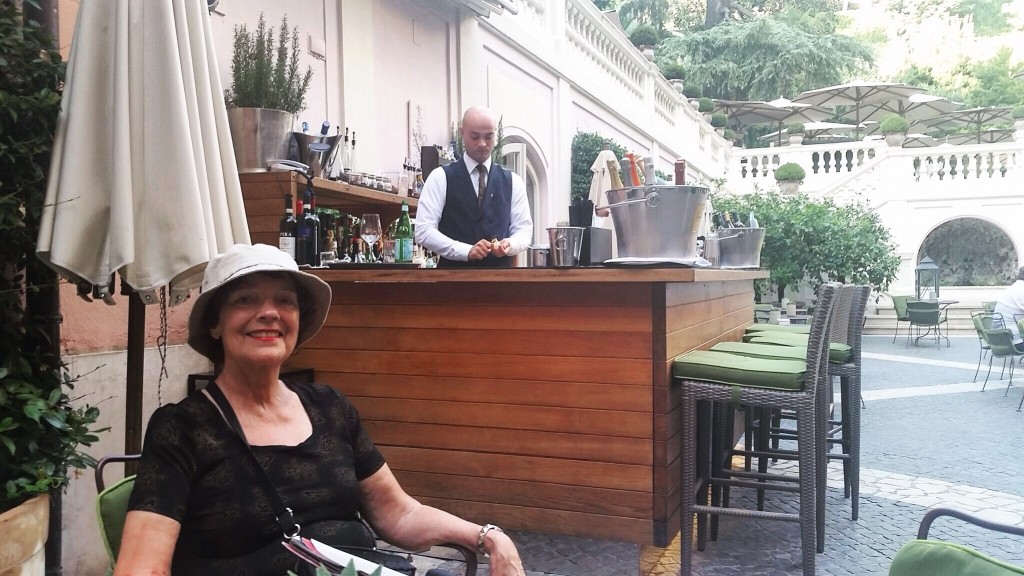
My mother relaxing in the outdoor courtyard bar and restaurant of the elegant Hotel Russie on Via di Babuino St.
The Grand Hotel Plaza on Via del Corso is a glimpse into old world glamour. It has been a luxury hotel since the 1860’s and has hosted royalty, popes, movie stars and other dignitaries. Fellini was often found here both for meetings and for people watching for his films. He replicated the large carved stone lion on the staircase is in his film 8 1/2. More recently, the interiors of Ocean’s 12 and Gangs of New York by Martin Scorsese were filmed here

The marble lion at the end of the stair case at the Old World Grand Hotel Plaza.
The regal Hotel d’Inghillterra, named because of its popularity with British visitors was built in the 16th century as guest quarters for the nearby palazzo of the illustrious Torlonia family. In 1845, the residence was converted into a hotel. It was there in the Bond Bar that I had my first taste of the quintessential Roman dish, Spaghetti alla Carbonara. For such an ancient city, this signature dish has a much younger and mysterious history. It is a rich dish made with a sauce of egg, pecorino and guanicole (italian cured pork cheek) with cracked pepper and pairs well with a glass of Merlot. There are several fun legends surrounding this dish, although most are probably apocryphal. Since Carbonara means carbon, one story is that the dish originated when it was created by Roman Carbinai, men who worked in the bush, carbonising wood to produce charcoal. Another claims that the US Army arrived in Rome, American soldiers mingled their scrambled eggs and bacon with pasta and suddenly the Italians copied them. We may never know the true origins of the dish but it is a delightfully filling meal.

One of the many beautiful old maps on the walls of the hallways of the Vatican Museums.
The Vatican was naturally on the list of sites to see. It can be a bit overwhelming so we had booked a tour. Part of this tour includes viewing some of the Vatican Museums that house one of the world’s most magnificent art collections containing Christian and pre-Christian art located in what were once papal palaces for Popes of the Renaissance. There are tours people can take just of the Vatican Museums. Hall after hall and room after room feature sculptures, paintings and a large collection of maps that showed the geographically history of the western world. We learned of the rivalry between Raphael and Michelangelo and I found myself smiling at many pieces that I had only seen in my college Renaissance art class. I was also incredibly impressed with the large collection of modern religious art given as gifts to the Vatican over the years but unfortunately we did not have time to linger there.
The Sistine Chapel of course is what everyone thinks of when they think of the Vatican. My Mom and I sat on bench surrounded by the crowd and looked up in awe at the amazing ceiling. We found the face of the Sibyl of Delphi that my great aunt Dot had painted and which hangs now in my parent’s parlor.The Sibyls were women who were able to portend the future as told from the Gods. My mother and mused on the way Michelangelo had capture the anxiety and worry of such a task in her beautiful face.
Finally, was a walk through St. Peter’s Cathedral which is a very powerful and ornate space. A shrine was built here in the 2nd century on St. Peter’s tomb and the first basilica commissioned by Emperor Constantine completed in 349 AD. In 1506 a new new church was started by Pope Julius II that took a century to build with many great Baroque and Renaissance artist involved. You lose yourself in the weight of the church’s history here where popes ruled and the hand of the church shaped nations.
The other iconic site of course everyone visits is the Colosseum built in 72 AD to hold 5,000 people with 80 entrances and where public deadly gladiators and wild animal fights were staged. My mother was deeply moved to be standing in a place she has been learning about since childhood. She spoke of her father and brother who both loved Roman history. She wished they were here. The never got to see it. I was happy we were there on a warm September day, our tiny family stories floating among the larger, ancient story of the Romans, as the modern life of Italy with tourists spun around us. We both noted how in shape the Romans must have been climbing all of those stone steps. I try to picture the Colosseum full of its spectacle elephants and bears and lions and gladiators and the people climbing those stone steps. They were real. They were not just a movie or an HBO series. And yet the flesh and blood is gone. It is so distant. What remains is the stone. Our imaginations must do the rest.
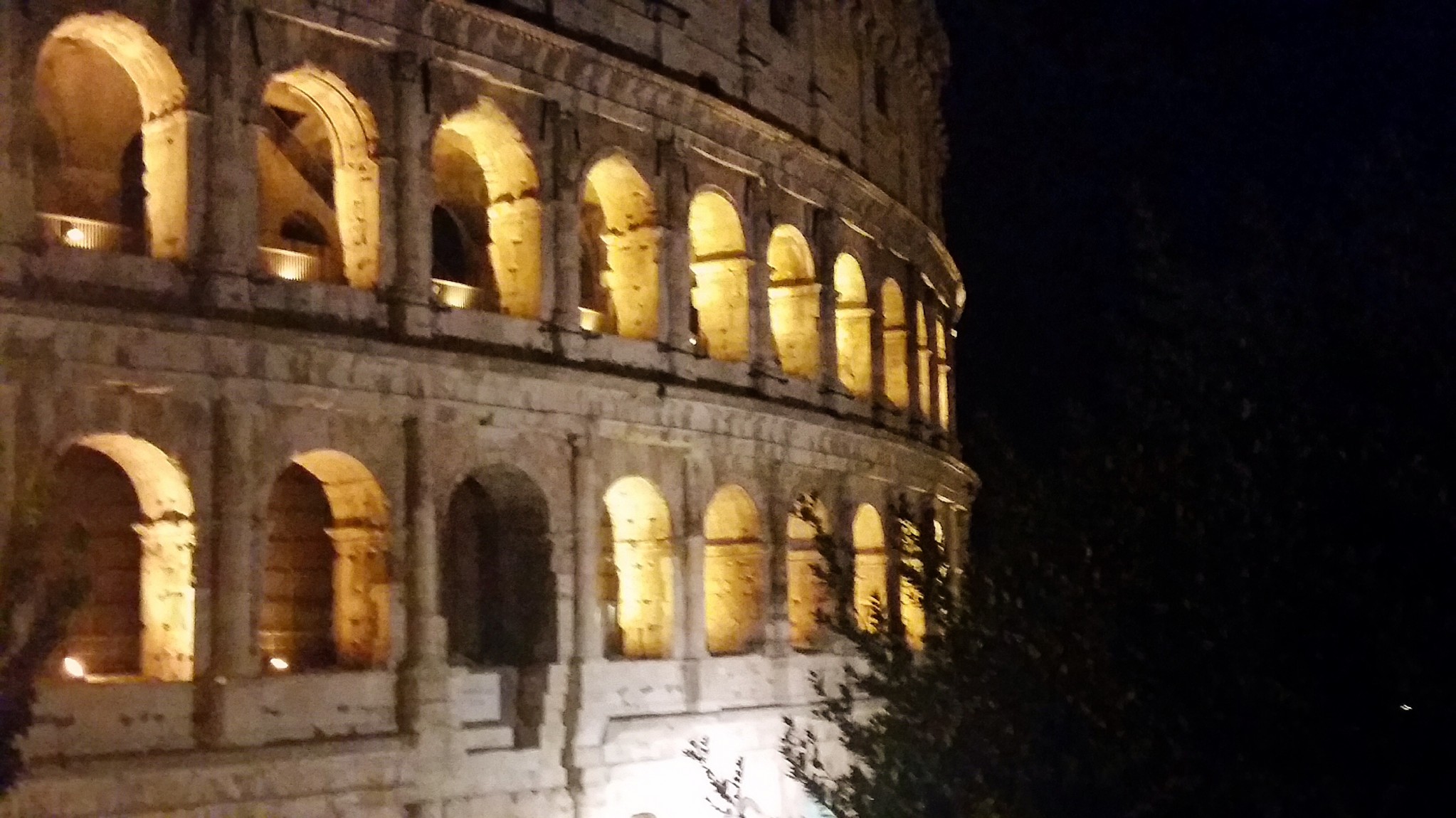
The Roman Colosseum lit up at night
On our trip to the Vatican we had taken a taxi driven by Max, a nice friendly and knowledgeable gentleman. A native of Rome, He had been in the U.S. He knew the city intimately and was passionate about its culture and history. He told us The Pantheon was not to be missed. (I did follow his advice and visit the an just a few blocks away in the Piazza della Rotunda) We exchanged information in case we needed a cab, and later that day we begin chatting on What’s App. Over the next few days Max took me on some off the beaten path tours of the city, and gave me much insight into Rome. In addition to showing me the special key hole ,he took me to see the Colosseum and the ancient Baths of Caracalla lit up at night. We also saw “The Mouth of Truth” at the Church of Santa Maria. During medieval times a tradition was started that if you were lying about something a put your hand into it would close around it. This is still a popular tradition because it was a famous scene in Roman Holiday, Audrey Hepburn’s first film where she plays a princess pretending to be someone else. He told me that Via del Corso was named so because they used to have horse races on the street in the 15th century. We drove many times by the garish white marble monument to Victor Emmanuel that is detested by many and which he noted is referred to as the “Wedding Cake” or “Typewriter because of the way it is built.
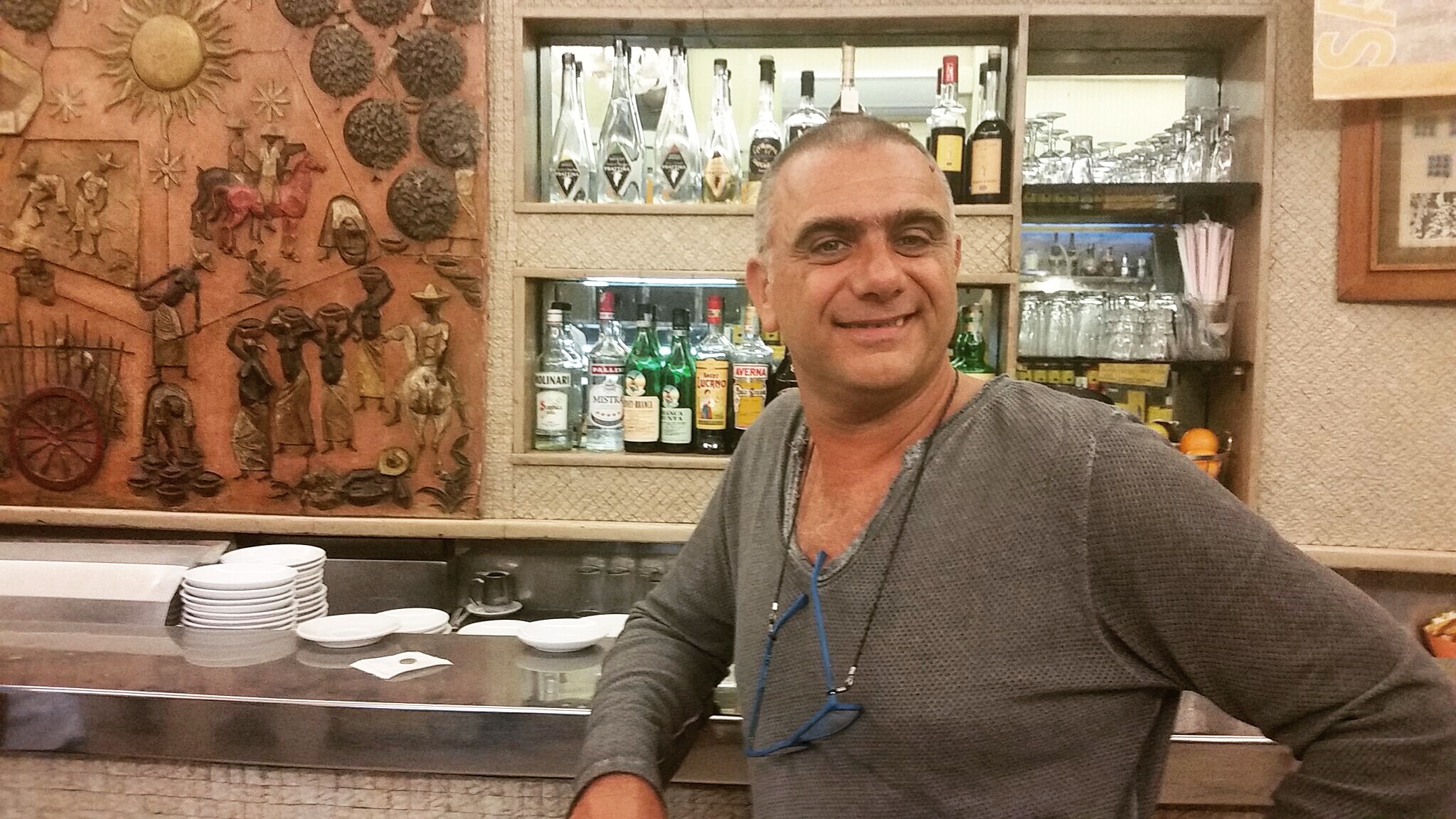
My taxi driver friend and tour guide Max having an espresso at the famous Sant’ Eustachio Caffè.
One night we stumbled onto a digital light show on the green space at Circus Maximus, former site of a Roman stadium. I found out later the installation was called Globoscope and designed by the French collective art group COIN. It featured 256 bright spheres arranged and controlled by a wireless system across the grass and was part of the RO-Map, a digital mapping festival being held in Rome that week. It was fun to see such a modern art installation on the ancient grounds. Max also introduced me to the wonderful Gianicolo or Janiculum Hill (nicknamed the 8th hill of Rome since it is on the opposite of the Tiber where the original hills of Rome are located) which I returned to a couple of times. The name comes from top of which offers exceptional views of Rome. It is also the place that Garibaldi held off the attacking French troops in 1849 and there is park there that featuring many monuments to Garibaldi and his men. There is also a botanical garden the huge Acqua Paola from the 17th-century and many stately homes.At noon everyday a canon fired everyday a tradition from 1847, when a cannon fired to let the churches know when to ring the noon time bells. Max was a great tour guide. He understood that history is narrative and blended facts with personal history and observations of contemporary life and politics. I asked him why the numbers on the streets change. The right side might be 10, 11, 12 while the other side would say 120. It is because they follow the whole street down. They don’t go as in the U.S. odds and even. I also asked him where was his favorite gelato. He takes me to The Old Bridge Gelateria where I order a very large cone of Pistachio and Hazelnut. After, we go for espresso at Sant’ Eustachio Cafe which is still listed as one of Rome’s top places for espresso. We also drank Campari from tiny glass bottles that was delightful and wish I could obtain here. There is nothing like getting a tour from a local and I am grateful for the glimpse I got of Max’s Rome.

The tranquil and charming Via dei Coronari full of antique and art shops in the Piazza Novona section.
On a day that my mother and I were doing our own thing I headed out to find Gelateria del Teatro off of Via dei Coronari which I had read about on several lists of the best glato in Rome. Via dei Coronari i is where many medieval pilgrims heading towards St. Peter’s traveled to cross over the Tiber. Along the way there were plenty of merchants attempting to take advantage of these throngs of pilgrims, and the street was inundated with people selling of rosaries. Coronari translates to “the rosary sellers.” Sadly the pilgrimage could cost one their life. In 1450, 200 traverse died crushed by crowds or drowned in the Tiber. Now it is a charming serene street full of antique shops and small boutiques. Gelateria del Teatro is housed in a picturesque corner. I ordered three kinds: raspberry sage, lavender and honey and sat on some quiet steps that lead to an apartment building next door. One of the gifts of travel is that it gives us that ultimate luxury time to be truly present. I ate slowly. Breathed in the air and watched the strolling people.
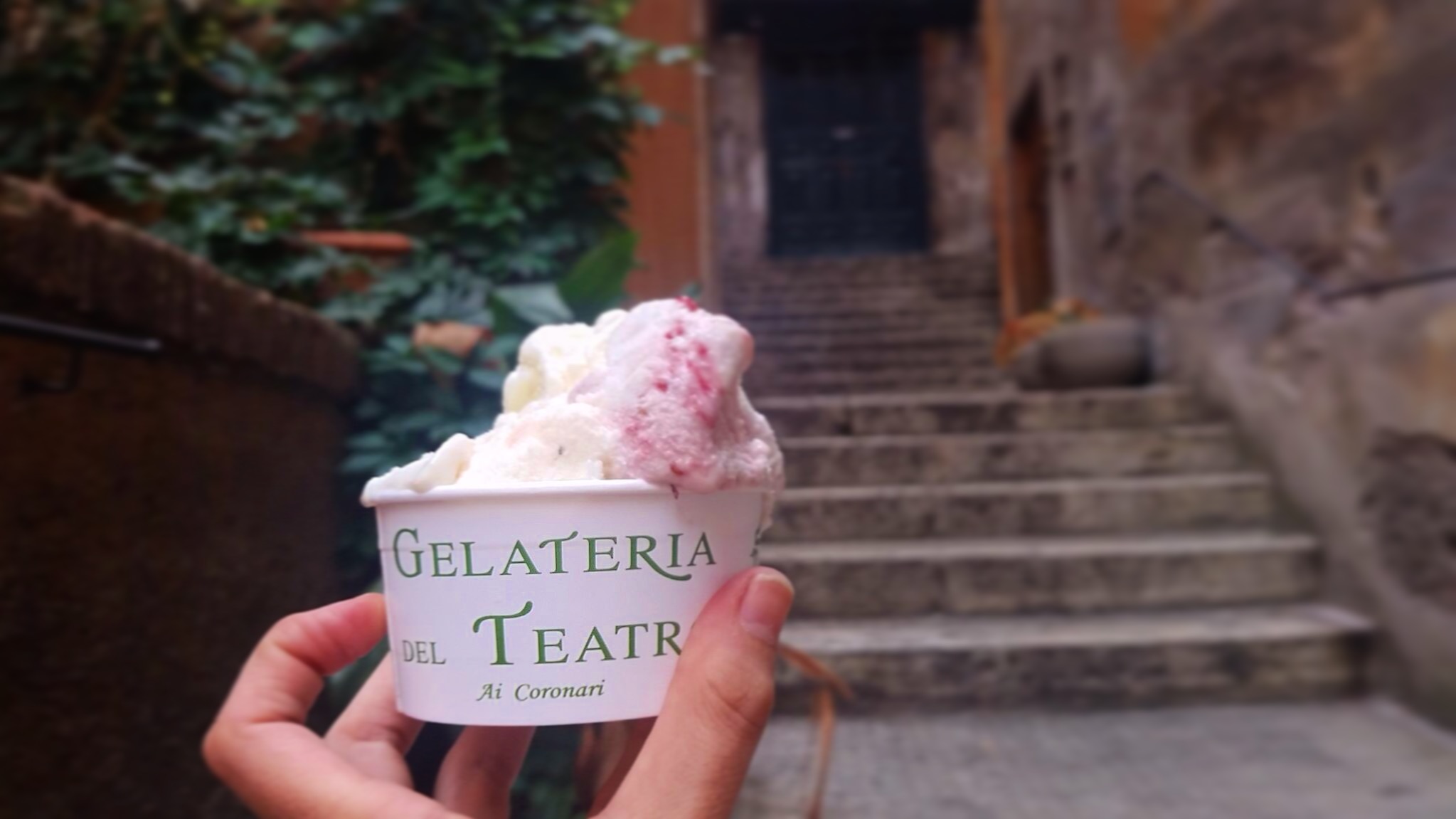
Raspberry Sage, Lavendar and Honey gelato from Gelateria del Teatro off Via dei Coronari St.
On the way back I walk through the lively Piazza Navona filled with artists selling paintings and surrounded by Baroque churches with its three fountains the most famous by Gian Lorenzo Bernini Fontans dei Quattro Fiume personifying four of the world’s rivers and the other two by Giacomo della Porta.
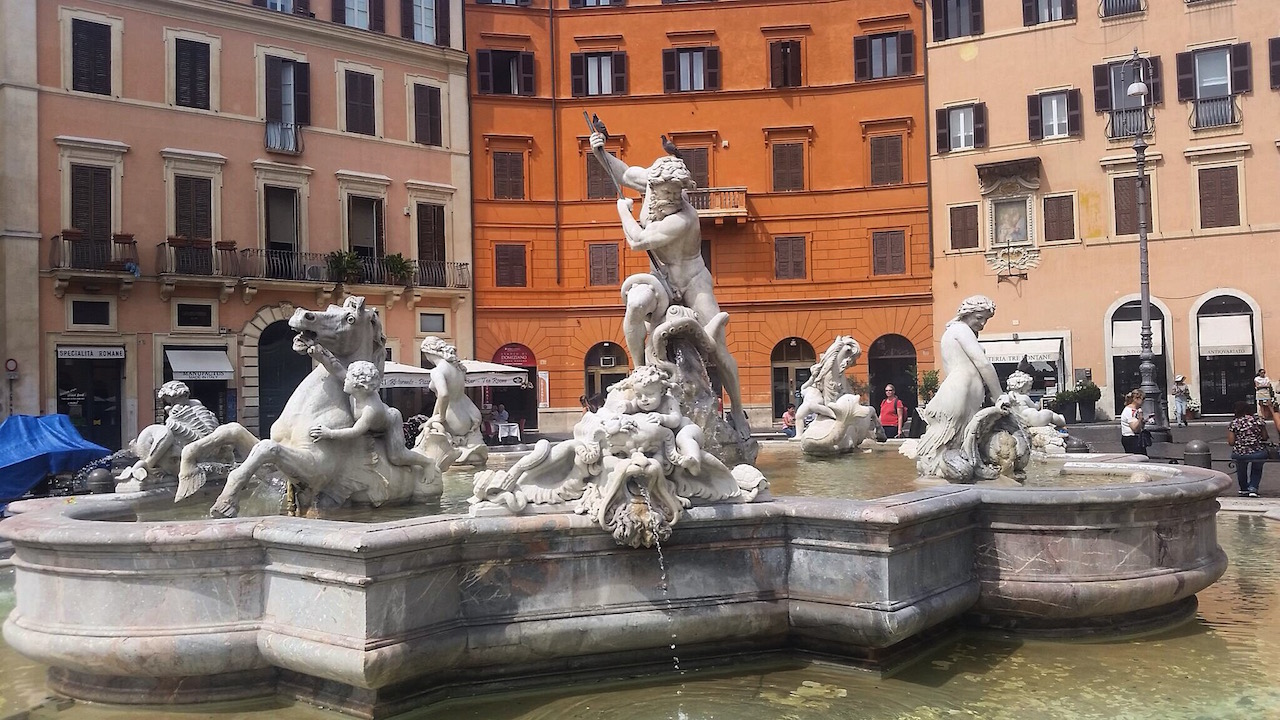
The Fontana dell Nettuno by Giacomo della Porta one of three fountains in the Piazza Navona.
I had read that Sant’Andrea della Valle, the setting of Puccini’s opera Tosca was very close. The church was nearly empty and the entire sounds of the busy street outside evaporated and there was in front of me this overwhelming gorgeous gold leaf ceiling with light pouring through with the most glorious frescoes creating a space of joy, wonder and peace. I walked several times around and sat for quite a bit. I wished I could take the rapturous and glorious feeling home with me.

Ceiling of the Sant’ Andrea della Valle church, the setting of Puccini’s opera Tosca.
Another site on Nezka’s not to miss list was the Galleria Borghese, a museum that houses the collection of the art patron Cardinal Borghese including works by Bernini, Titian and Carvaggio among others in a former 17th century villa in the lush Borghese park. You must buy your tickets on line and they frequently sell out.
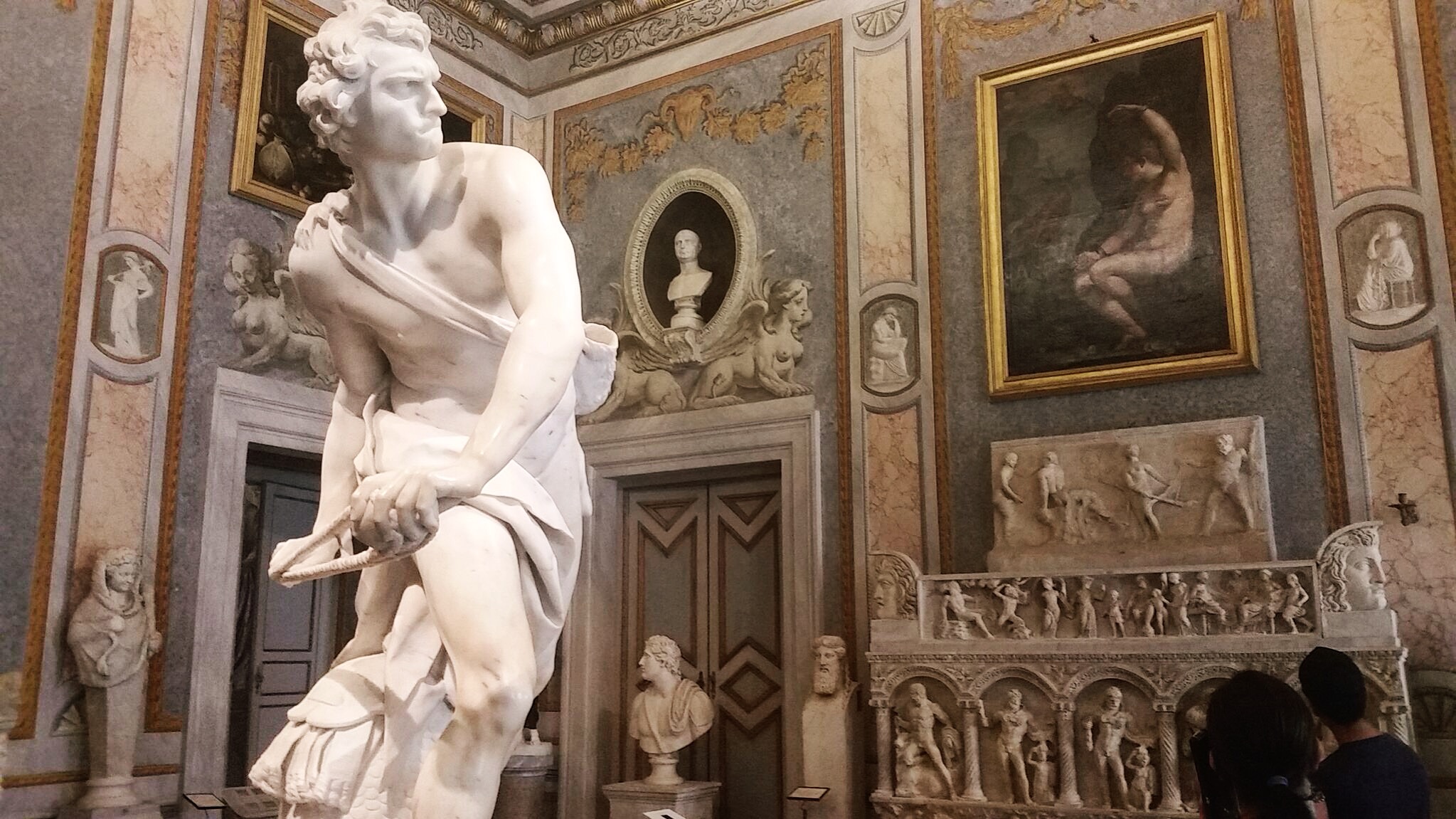
The famous sculptor Gian Lorenzo Bernini’s David at the exquisite Galleria Borghese.
The Cardinal had a reputation for being ruthless in his collecting strategies and it is true some works were obtained in dubious ways. Afterwards, you can have a bit to eat at Piccolo Mondo which has been in its location at 39 Via Aurora since 1954 “during the magic years of La Dolce Vita” as their website says. And it is true there are wonderful old photographs not he wall and indeed the restaurant has the vibe of a place that has lived through iconic eras.
My love of culinary adventure sent me out on another pilgrimage to Da Enzo, a restaurant off the beaten path in Travastere neighborhood that I had read was popular with locals and where I had the sublime experience of eating Carciofi alla giudìa-artihcokes in the Roman Jewish style. Due to the overwhelming dominance of the Catholic Church in Rome, many people may not be familiar with the long and rich history of Judaism in the city. Roman Jews arrived in Rome in the second century B.C. and were able to remain free under Roman rule, but sadly in 1555 under Pope Paul IV they were sequestered in a ghetto near the Tiber River in Trastevere that constantly flooded. Despite poverty, oppression and geographical challenges, their cuisine did not suffer. Creativity prevailed, and so we have such a simple but amazing dish as Carciofi alla giudìa which developed because artichokes were cheap and plentiful. I ate slowly enjoying the atmosphere in the cozy restaurant with its red checkered table hearing Italian and sipping my 1/2 a litter of wine, as I ate my artichoke. The crispness of the leaves folded into softness of the stem, and the salt and oil accentuated the earthiness of this vegetable. I also had vegetarian lasagna and finished off my delightful meal with some Zabilogne.

A mountain biker rides along the Appian Way, the famous ancient Roman road.
On my penultimate day in Rome I journeyed to the remains of the famous Via Appia or Appian Way, and why we say “all roads lead to Rome.” Begun in 312 BC the road eventually spanned 330 miles and ended at the Port of Brindisi on the Adriatic Sea where boats shipped out to Greece, North Africa and Egypt. This is where Spartacus and his rebel army were crucified, St. Paul entered the city on his Christian mission and St. Peter walked to his martyrdom. The road is still lined with remnants of ancient monuments and other ruins. While there were people including mountain bikers zipping past it has a much more bucolic setting and less crowded with tourists than other sites. I experienced a deep peacefulness walking on the stones of this ancient road under the Cypresses and the quintessential Roman trees, Umbrella Pines. Stone Pine is the actual name of this whimsical and beautiful tree which resemble an umbrella and has been cultivated for 6,000 years for its edible seeds.
A week is not enough time in Rome. I was saddened to think I had only accomplished probably not even a third of what I would have liked. At the same time I was grateful at how enriched I felt by all I had experienced. My week in Rome has definitely a big place in my own secret library of memory ,and it is a city I know I will return to.
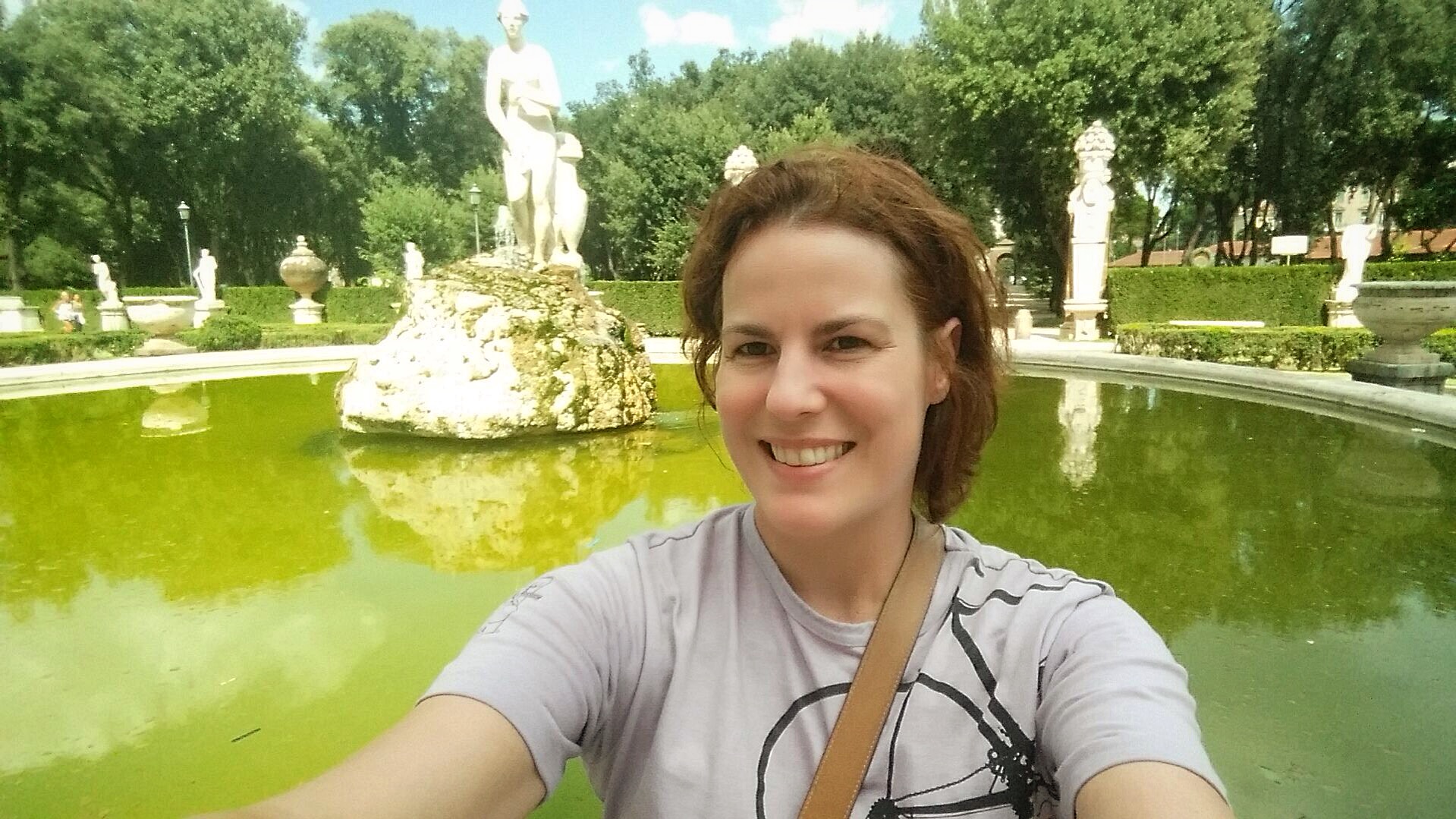
Selfie in the gardens outside the Galleria Borghese.

